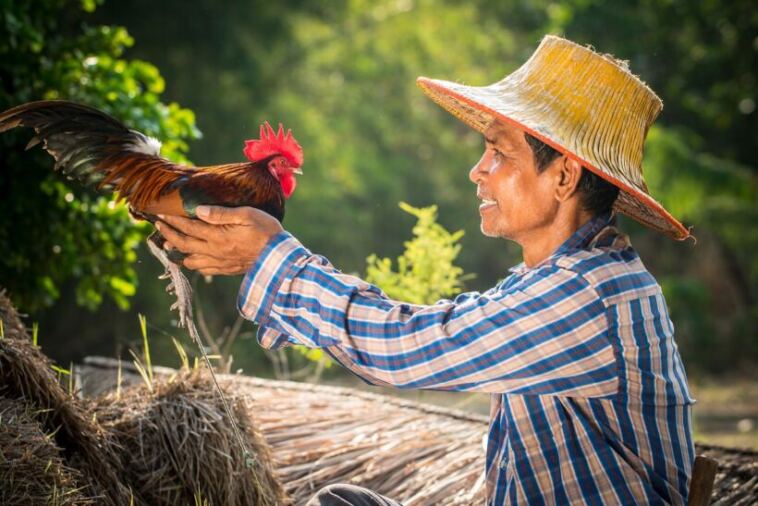- Like
- SHARE
- Digg
- Del
- Tumblr
- VKontakte
- Flattr
- Buffer
- Love This
- Save
- Odnoklassniki
- Meneame
- Blogger
- Amazon
- Yahoo Mail
- Gmail
- AOL
- Newsvine
- HackerNews
- Evernote
- MySpace
- Mail.ru
- Viadeo
- Line
- Comments
- Yummly
- SMS
- Viber
- Telegram
- JOIN
- Skype
- Facebook Messenger
- Kakao
- LiveJournal
- Yammer
- Edgar
- Fintel
- Mix
- Instapaper
- Copy Link
Introduction
Landrace cannabis strains are captivating varieties that have been cultivated in their indigenous regions for centuries. These strains are known for their distinct genetic profiles, potent effects, and rich cultural histories.
Here is a look into the world of unique landrace cannabis strains, exploring their origins, characteristics, and the cultural significance they hold.
Understanding these heritage strains can deepen our appreciation for cannabis diversity and provide insights into the origins of the modern cannabis landscape.
What Exactly are Landrace Cannabis Strains?
Landrace cannabis strains are native, wild, or heirloom varieties that have evolved in specific regions with minimal human interference.
These strains are often named after their regions of origin, such as Afghani, Thai, or Durban Poison. They have adapted to the local environmental conditions and possess distinct genetic traits, including potent effects, unique flavors, and specific growth characteristics.
Why Are Landrace Cannabis Strains Important?
Landrace strains play a vital role in the development of modern cannabis hybrids. They offer a rich genetic foundation, providing breeders with unique traits that can be introduced into new cultivars.
Preserving landrace strains is crucial for biodiversity, cultural heritage, and scientific research. These strains often possess specific cannabinoid and terpene profiles, representing the ancestral roots of cannabis and offering a diverse range of experiences.
What are Some Examples of Landrace Cannabis Strains?
1. Durban Poison (South Africa)
Originating from South Africa, Durban Poison is renowned for its energetic and uplifting effects. It boasts a sweet and spicy aroma, and its sativa-dominant genetics make it popular among creative individuals.
2. Afghan Kush (Afghanistan)
Hailing from the Hindu Kush mountains in Afghanistan, Afghan Kush is an indica strain known for its deep relaxation and sedative qualities. It offers earthy, hash-like flavors and dense resinous buds.
3. Malawi Gold (Malawi)
This sativa-dominant strain comes from the mountainous regions of Malawi in Southeast Africa. Malawi Gold is celebrated for its euphoric and stimulating effects, as well as its sweet and fruity aroma.
4. Thai Stick (Thailand)
Thai Stick is a landrace strain originating from Thailand. It gained popularity in the 1970s and is characterized by its potent cerebral effects and unique handcrafted appearance, where the buds are skewered on sticks.
5. Colombian Gold (Colombia)
Colombian Gold is a sativa strain hailing from the mountainous regions of Colombia. It offers a euphoric and uplifting high, along with a sweet and fruity flavor profile.
Why Has There Been a Resurgence of Landrace Strains?
In recent years, there has been a resurgence of interest in landrace strains as cannabis enthusiasts and breeders recognize their value.
Dedicated preservation projects and seed banks work to protect these strains from extinction and provide access to their genetics.
The availability of landrace strains allows for the exploration of diverse flavors, effects, and experiences that connect us to cannabis’s ancient roots.
Cultivating landrace strains requires special care and attention to replicate their native environments. Breeders and growers interested in preserving and working with landrace strains often focus on creating sustainable cultivation practices that respect the plants’ genetic integrity.
These strains are cherished for their historical and cultural significance, and enthusiasts appreciate the unique experiences they offer.
How Do You Grow Landrace Cannabis Strains?
Growing landrace cannabis strains is a rewarding experience that allows cultivators to connect with the roots of cannabis and preserve its genetic diversity.
These unique heritage strains require special care and attention to thrive and maintain their authenticity.
In this quick landrace cannabis strain growing guide, we will explore essential growing tips for landrace cannabis strains, enabling you to cultivate these plants successfully while honoring their rich cultural and genetic heritage.
Understanding Landrace Cannabis Strains
Before diving into growing tips, it’s crucial to have a good understanding of landrace cannabis strains.
These varieties have evolved naturally in specific geographic regions over centuries, adapting to the local climate, soil conditions, and other environmental factors.
Landrace strains often exhibit unique characteristics, such as potent effects, distinct flavors, and specific growth patterns. Preserving the authenticity of landrace strains ensures the continuation of their genetic integrity and cultural significance.
The Importance of Seed Selection
When embarking on a landrace cannabis cultivation journey, it’s essential to source authentic seeds from reputable breeders or seed banks.
Authenticity is crucial to preserve the unique genetic traits and characteristics of landrace strains.
Look for seed sources that have a strong reputation for working directly with local communities or organizations involved in landrace strain preservation.
Proper documentation and certification can also provide assurance of the seed’s authenticity.
Understanding Regional Conditions
Landrace strains have adapted to specific regional conditions, including climate, temperature, humidity, and soil composition.
Before planting landrace seeds, research and understand the native environment of the strain you’re cultivating.
This knowledge will help you create a growing environment that closely mimics the strain’s natural habitat, providing the optimal conditions for healthy growth and development.
The Importance of Providing the Right Growing Environment
Creating a suitable growing environment for landrace strains is crucial to their success. Consider the following factors:
-
- Light: Landrace strains may have specific light requirements. Some strains thrive in full sun, while others prefer partial shade. Understand the strain’s light needs and provide the appropriate lighting conditions.
- Temperature and Humidity: Maintain the optimal temperature and humidity levels that match the strain’s native region. This may involve using heaters, air conditioners, humidifiers, or dehumidifiers to create the ideal microclimate.
- Soil and Nutrients: Research the soil composition of the strain’s native region and try to replicate it as closely as possible. Amend the soil with organic matter, nutrients, and beneficial microbes to provide a fertile growing medium for the plants.
- Watering: Water landrace strains according to their specific needs. Some strains may prefer drier conditions, while others require more frequent watering. Avoid overwatering, as it can lead to root rot and other issues.
- Air Circulation: Good airflow is vital for preventing mold, pests, and diseases. Proper ventilation and strategic placement of fans will help maintain a healthy growing environment.
The Importance of Preserving Genetic Integrity
Preserving the genetic integrity of landrace strains is essential for maintaining their authenticity.
To prevent cross-pollination, consider isolation techniques such as using physical barriers or growing landrace strains in separate locations.
This ensures that the plants remain true to their genetic makeup and prevents hybridization with other strains.
Utilizing Pruning and Training Techniques
Landrace strains may have specific growth patterns that require careful pruning and training. Monitor the plants’ growth and selectively prune to improve airflow, manage height, and increase light penetration.
Training techniques like low-stress training (LST) or tying down branches can help control the plant’s shape and optimize bud development.
Harvesting and Drying Considerations
When it comes to harvesting landrace strains, observe the plant’s trichome development and follow the strain-specific harvest window.
Once harvested, employ proper drying and curing techniques to preserve the flavors, aromas, and potency of the landrace strain.
Conclusion
Landrace cannabis strains represent the cultural and botanical heritage of specific regions, offering distinct flavors, effects, and growth characteristics.
Exploring landrace strains not only allows us to appreciate cannabis in its purest form but also serves as a foundation for future hybridization and innovation.
Ultimately, cultivating landrace cannabis strains requires a deep understanding of their unique characteristics and environmental needs.
By following these tips, you can honor the heritage of these strains, preserve their genetic integrity, and maximize the success of your cultivation.
Embrace the journey of growing landrace cannabis, and contribute to the conservation of cannabis diversity for generations to come.


